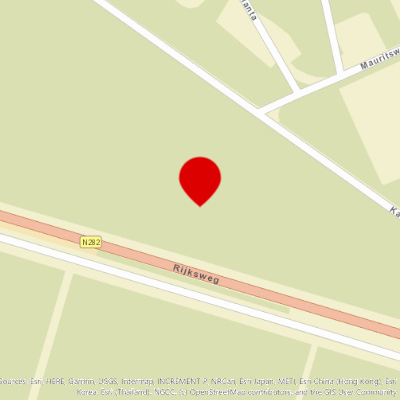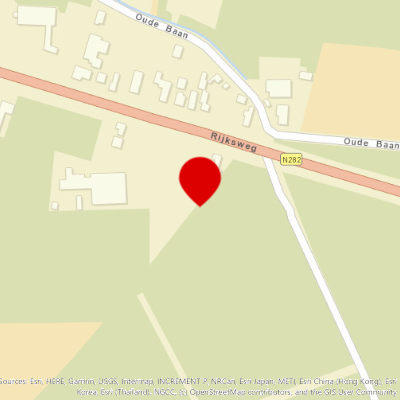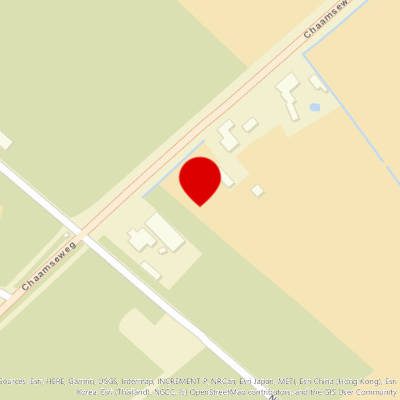Liberation route Gilze Rijen
Even today, Gilze-Rijen is dominated by flying and by planes. Immediately after the occupation, in May 1940, the Germans expanded the existing airport and renamed it Fliegerhorst Gilze-Rijen, one of the largest airports in Europe.
Starting point: from your location
Show all 5 photos
Even today, Gilze-Rijen is dominated by flying and by planes. Immediately after the occupation, in May 1940, the Germans expanded the existing airport and renamed it Fliegerhorst Gilze-Rijen, one of the largest airports in Europe. This military installation had a huge impact on local residents. Bombing of allies, employment of local residents to conduct repairs - and on this route, you'll read and hear all about it. Prepare yourself to hear some interesting stories: from the lucky resistance fighter, to the story of the Good German.
The Liberation Route Brabant tells the story of the liberation, but also shows what the Second World War was like for ordinary people who lived in Brabant at the time. Eight cycling routes, spread across North Brabant, lead you past the Brabant Remembers stories, the Liberation Route Europe audio columns, monuments and museums. Together they make the impact of the war on North Brabant clear, even all these years later.
-
Signage Liberation Route Brabant
Follow the signs with 'Liberation Route'. These are hung below the regular junction signs.

Signage Liberation Route Brabant
Follow the signs with 'Liberation Route'. These are hung below the regular junction signs.

-
Hotline routes
Hotline routesIf there is something wrong on the route, report it here.
Sights on this route
De Huyskamer Gilze

In 2022, Misset Horeca declared De Huyskamer Gilze to have the best patio of North Brabant. It is an award that the restaurant and bicycle café is rightfully proud of.
Starting point:
Bisschop de Vetplein 95126 CA Gilze
Navigate to starting point

House at Fliegerhorst Gilze-Rijen
Maria (Mie) Ligtvoet-Maas lives with her husband Thomas (Tommes) in Molenschot, on the west side of Fliegerhorst Gilze-Rijen.
Starting point:
rijen
Royal Netherlands Air Force Historical Flight Foundation
Historic aviation at the airbase began in 1969 with the founding of the Stichting Vliegsport Gilze Rijen. Former pilots of the Royal Netherlands Air Force began restoring a Harvard and a Piper Super Club in a hangar.
Starting point:
rijen
Royal Netherlands Air Force Historical Flight Foundation
Royal Netherlands Air Force Historical Flight Foundationrijen
Gilze-Rijen Air Base Military Collection
The military collection at Gilze-Rijen Air Base collects, manages and displays historical air force memorabilia from around the region. In addition, this exhibition gives an insight into the exceptional role of this air base in the region. Distinguished b
Starting point:
Rijksweg 1215121 RD Rijen

Gilze-Rijen Air Base Military Collection
Gilze-Rijen Air Base Military Collection
Rijksweg 121
5121 RD Rijen
Remains of the bunkers in Hulten
During the Second World War the Gilze-Rijen Air Base extended as far as here. There are the remains of a number of bunkers on the edge of the wood, with the bullet holes still clearly visible. Fourteen small, concrete ammunition bunkers once stood here: s
Starting point:
Rijksweg5125 NG Hulten

Statue The Good German
Once upon a time, there was a German boy who knew everything about fragility. Born in Meißen, Germany’s porcelain city.
Starting point:
Dorpstraat 34Riel

De Kiek decoy airfield
Gilze-Rijen air base was frequently bombed by the Allies. To prevent the airfield from being destroyed, a decoy airfield, De Kiek, was constructed between Alphen and Riel. From the air it looked identical to Gilze-Rijen, and just like Gilze-Rijen it was b
Starting point:
Schijnvliegveld de KiekOude Tilburgsebaan
5131 RJ Riel

De Kiek decoy airfield
De Kiek decoy airfield
Schijnvliegveld de Kiek
Oude Tilburgsebaan
5131 RJ Riel
One Day of Leave
In August 1939, the Dutch government realizes that war with Germany is a real danger.
Starting point:
riel
Former German Military Camp Prinsenbosch
At the end of 1940, the Luftwaffe confiscated about thirty hectares of woodland between Gilze and Chaam, with the intention of constructing a large, luxurious army camp. The entire complex was completed by the end of 1941. The camp consisted of about fift
Starting point:
Prinsenbosch5126 ND Gilze

Former German Military Camp Prinsenbosch
Former German Military Camp Prinsenbosch
Prinsenbosch
5126 ND Gilze
De Huyskamer Gilze

In 2022, Misset Horeca declared De Huyskamer Gilze to have the best patio of North Brabant. It is an award that the restaurant and bicycle café is rightfully proud of.
Starting point:
Bisschop de Vetplein 95126 CA Gilze
Navigate to endpoint

- 15
- 13
- 16
- 11
- 32
- 42
- 19
- 71
- 01
- 43
- 54
- 55
- 08
- 09
- 34
- 47
- 74
- 70
- 72
- 67
- 68
- 69
- 15

















